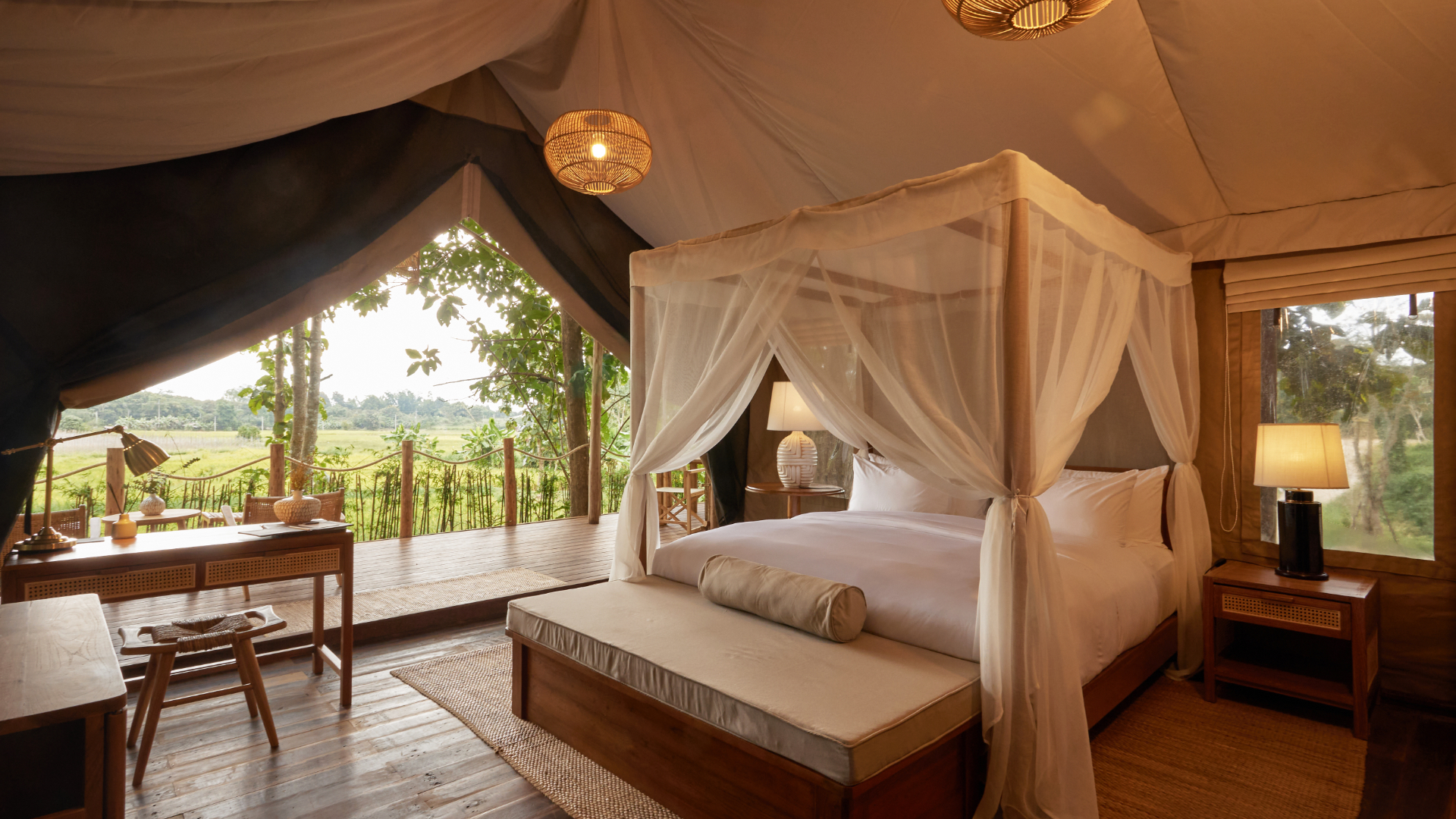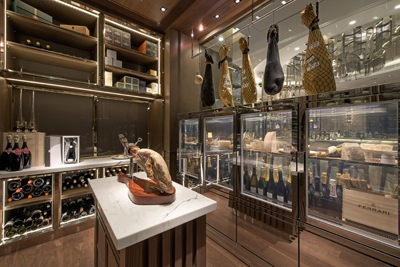
Impressing VIP clients in restaurants has become a major challenge for events planners. It is no longer enough that the food and drink be of unarguably high quality. The meal has to be in some additional respect exceptional.
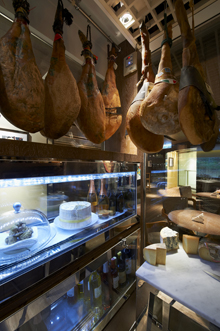 The reputation of the chef is important, of course, ut discerning diners are also interested in what happens to their food before it is cooked. Some high-quality produce improves with keeping, and many like to know how and for how long it has been matured.
The reputation of the chef is important, of course, ut discerning diners are also interested in what happens to their food before it is cooked. Some high-quality produce improves with keeping, and many like to know how and for how long it has been matured.
Has the steak been dry or wet aged? What wood was used to smoke the salmon? After how much affinage (ripening) exactly did the chef deem a particular cheese ready for the table?
It is one thing for a restaurant to say on its menu, for example, that its beef is Australian Black Angus Wagyu, exclusively reared to the chef’s specifications on a particular ranch. To be able to add that it has been dry aged for 45 days under the direct supervision of the chef in the restaurant’s own maturing room, however, will ensure that even the most blasé group will pay closer attention to their steak.
Tenderising
Executive chef Shane O’Neill of the 1515 West Chophouse & Bar at the Jing An Shangri-La in West Shanghai can make all those claims for his high-end steaks, but he particularly likes to stress the importance of the in-house maturing process. “Dry ageing is a process where the meat is left to hang in a room under controlled conditions,” he explains.
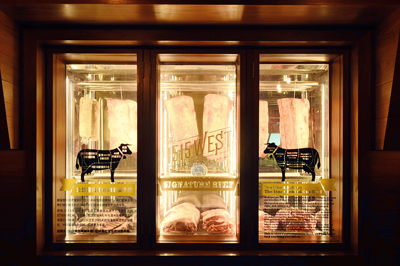
“The temperature and humidity have to be perfect to allow the meat to age perfectly. To ensure the highest of quality, we follow the traditional method of dry ageing. The 45-day process is done in special cabinets where temperature and humidity are kept under control. Enzymes naturally found in the meat will break down the connective muscles thereby tenderising it.
“During dry ageing the meat will lose 35 per cent of the yield [water content]. This causes the meat to turn a little bit darker but expresses most taste because of less moisture inside. The final product also cooks better on the grill this way.”
It also makes a straightforward cut of meat that little bit more interesting – and makes it easier to justify charging a fair bit more for it. Consequently maturing rooms are now a trend. An increasing number of hotels around Asia are now installing maturing rooms and cabinets, some of which can be viewed from the restaurants, while others are behind the scenes in kitchen areas.
Walk-in
Also in Shanghai, the Kerry Hotel Pudong has a state-of-the-art 8 sqm ageing room for its contemporary steakhouse The Meat. The maturing beef can be viewed through a window from the restaurant, and staff are trained to explain the finer points of the process to groups keen to acquire in an in-depth understanding of the dining experience they are about to enjoy.
A walk-in experience, unfortunately, is impossible because of the need to maintain a steady tem- perature of between zero to one degree Celsius. If it rises to three degrees, executive chef Otto Goh explains, an alarm sounds.
“The ageing process depends a lot on the temperature. Also we have an air-circulation system – the air speed is about 8km per hour – and the air is sanitised, so there are no bacteria circulating.
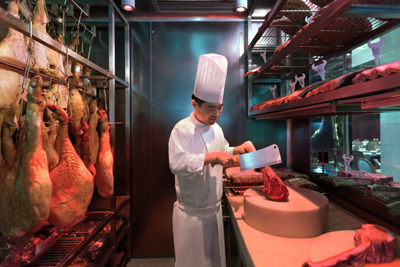
“We have the best humidity for ageing, which is from 65 to 85 degrees. Our staff can only go into the room once a day.”
Diners can, however, view the range of cheeses in the temperature and humidity controlled cheese vault of the hotel’s The Cook restaurant at closer quarters.
Hilton has turned to maturing rooms and cabinets to give its restaurants an additional qualitative advantage in several locations. At the Hilton Kuala Lumpur’s Chambers Bar & Grill and the Hilton Tokyo’s Tsunohazu, beef is matured in cabinets lined with Himalayan Salt Tiles for between 14 and 36 days. The salt serves both to purify the air and to slowly season the beef.
Cheeses
A little time and care in the keeping can make a big difference to artisan cheese as well. Cheese does not ripen at a uniform or absolutely predictable rate, but with a temperature and humidity controlled room it is possible to ensure that it reaches the diner at its absolute best in terms of taste and texture, and stays at that level for longer than it otherwise might.
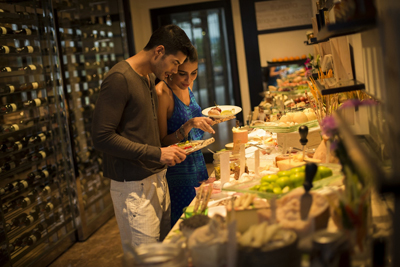
At the Millennium Hilton Bangkok, the city’s first dedicated Cheese Room (above) is a central feature of its Flow restaurant. Diners can go into this facility, in which they choose from 75 international cheeses presented buffet style, all of which have been allowed to ripen properly in optimum conditions.
“The Cheese Room offers the largest selection of cheeses in Bangkok,” says executive chef Lorenzo Rosso. “We take pride in providing not only the best cheese, but the most renowned and unique cheeses available worldwide.”
Maturing rooms are very much in vogue in Hong Kong, where one is a central feature of triple Michelin-starred chef Umberto Bombana’s Otto e Mezzo (main and second images, above) in which a selection of premium quality dry-cured hams are hung to age above a fine selection of cheeses. Similar rooms for curing ham and ripening cheese are a feature of the other branches of Otto e Mezzo, in Shanghai and in Macau at the Galaxy, and at Opera Bombana in Beijing.
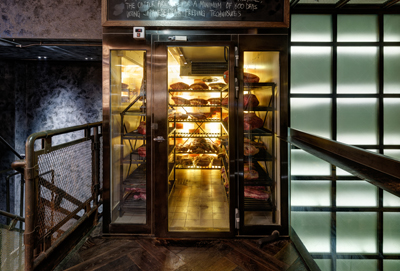
Cheese ageing rooms are also a feature of several branches of Hong Kong’s Classified group of restaurants, while the Blue Butcher (above) claims to be “the only restaurant equipped with a walk-in [Himalayan] pink salt dry ageing room in Hong Kong.” The salt is used to mature premium priced Australian and American beef, and the room is certainly one of the features which has attracted the restaurant’s considerable volume of corporate business.
Another of Hong Kong’s most popular venues for the carnivorously minded is the Grand Hyatt Steakhouse which matures its meat in its own Butcher Room, where the signature dry aged steaks rest for a minimum of two weeks. The hotel uses the same facility to prepare its Norwegian smoked salmon, which is fresh every day, having first been marinaded in the Butcher Room for two days and then smoked for two hours in a special smoke oven.
Whether or not your groups see the rooms in which their hams, steaks or cheeses have been patiently brought to peak condition before they are put on the plate, is perhaps incidental. These facilities can add significant value to the overall dining experience, and at a time when competition among restaurants for event planner dollars is fierce, can certainly confer a considerable advantage.
